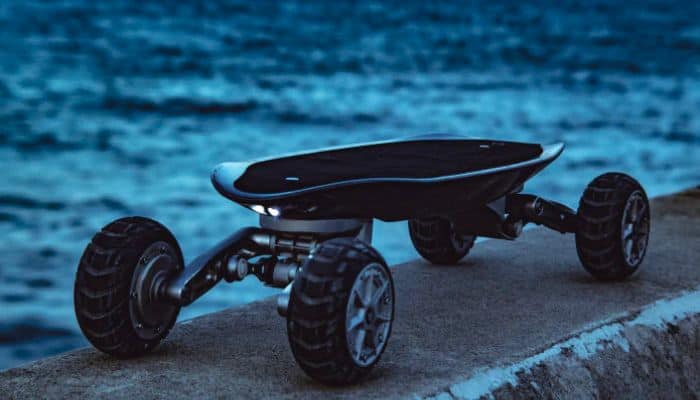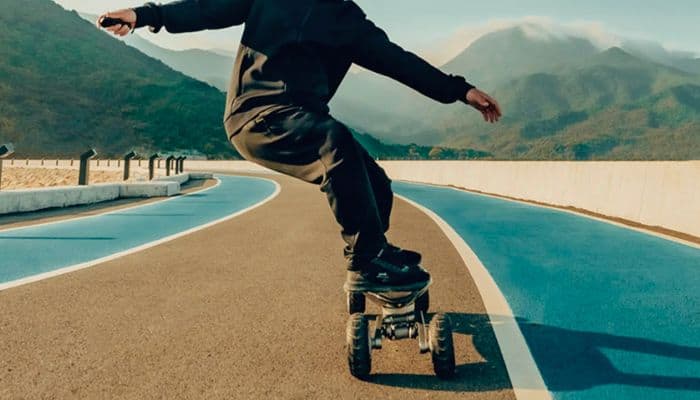Electric skateboarding, a thrilling blend of traditional skateboarding and technological innovation, has emerged as a popular mode of urban transportation and a fun hobby for many. If you’re new to this electrifying world, this guide is your starting point. We’ll delve into the essentials of electric skateboarding, focusing on mounting and dismounting, accelerating, and braking. Let’s embark on this exciting journey!
Getting Started: Safety First
Before we jump into the mechanics of electric skateboarding, it’s crucial to prioritize safety. Always wear a helmet, knee pads, elbow pads, and wrist guards. These protective gears are not just accessories; they are essential tools that keep you safe.
Step 1: Mounting Your Electric Skateboard
Mounting an electric skateboard might seem daunting at first, but with these steps, you’ll find it surprisingly simple.
Choosing Your Stance
First, determine your stance. Are you regular (left foot forward) or goofy (right foot forward)? Knowing your natural stance is key to maintaining balance.
Positioning the Board
Place your skateboard on a flat, smooth surface. Ensure it’s turned off while you’re getting on to avoid any unexpected movements.
The First Step
With your chosen front foot, step onto the board near the front trucks. Your foot should be at a 45-degree angle, giving you stability and control.
Balancing
Shift your weight onto the front foot, then gently place your back foot near the rear trucks. Your feet should be shoulder-width apart for optimal balance.
Step 2: Dismounting with Confidence
Dismounting is just as important as mounting. Always come to a complete stop before attempting to step off. Shift your weight to your front foot, then step back with your rear foot. Once your rear foot is securely on the ground, follow with your front foot.
Step 3: The Art of Accelerating
Electric skateboards come with a handheld remote control for acceleration and braking. Familiarize yourself with the remote before riding.
Starting Slow
Begin by standing still on your board. Gently push the throttle on the remote to start moving. Initially, practice this in an open area free from obstacles.
Gradual Increase
As you become comfortable, gradually increase your speed. Focus on your stance and balance as you accelerate. Remember, smooth and steady wins the race.
Step 4: Mastering Braking
Braking is a critical skill for safe electric skateboarding.
Understanding Your Brakes
Electric skateboards typically have regenerative brakes, which recharge the battery slightly when engaged. Get to know how your specific board’s braking system feels and responds.
Practice Makes Perfect
Start by riding at a low speed, then gently pull the brake lever on the remote. Feel the board slowing down and practice stopping smoothly.
Stopping Safely
Always anticipate your stops. Look ahead and start braking well in advance. Avoid sudden stops unless in an emergency.

Step 5: Turning – The Cornerstone of Manoeuvrability
Turning on an electric skateboard isn’t just about changing direction; it’s an art that combines balance, timing, and precision.
Understanding Weight Distribution
Turning involves shifting your weight on the board. To turn left, lean your weight onto your heels; to turn right, lean onto your toes. This weight shift causes the board to tilt and change direction.
Practice Drills
Start in an open area with no obstacles. Practice leaning gently to each side while stationary to get a feel for the board’s response. Then, try this at a slow speed. Remember, the faster you go, the more subtle your weight shift should be.
Mastering Smooth Turns
As you become more confident, your turns will become smoother and more natural. Practice wide, sweeping turns before attempting sharper ones. Always keep your knees slightly bent to maintain balance.
Step 6: Advanced Turning Techniques
Once you’re comfortable with basic turns, you can explore more advanced techniques.
Carving
Carving is a dynamic way of turning where you make a series of ‘S’ shaped curves. It’s not just functional but also a lot of fun. Start with wide arcs and gradually make them tighter as you gain confidence.
Kick Turns
Kick turns are useful for making sharp turns or pivoting. They involve lifting the front wheels off the ground slightly and swinging the board in the desired direction. This move requires practice and good balance.
Step 7: Navigating Different Terrains
Electric skateboarding isn’t limited to smooth pavements. As you advance, you’ll encounter various terrains.
Riding on Rough Surfaces
When riding on rough surfaces, relax your body and bend your knees more. This acts as a natural suspension system, helping you absorb bumps and maintain control.
Uphill and Downhill Riding
Uphill riding requires more power, so lean forward slightly to maintain balance. When going downhill, use your brakes effectively to control your speed and lean back slightly.
Step 8: Safety and Etiquette
As you venture out, remember to always respect traffic rules and be mindful of pedestrians and other vehicles.
Be Predictable
Use hand signals to indicate turns and stops, especially when riding in traffic. This makes you predictable to others and prevents accidents.
Stay Alert
Always be aware of your surroundings. Avoid using headphones or anything that could distract you from the sounds of the environment.
Conclusion
Mastering these advanced techniques will not only make you a proficient electric skateboarder but also ensure a safer and more enjoyable experience. Remember, practice is key. Each ride will enhance your skills and confidence.
Electric skateboarding is not just a mode of transportation; it’s a lifestyle that combines fun, freedom, and fitness. Embrace this journey with enthusiasm and respect for the sport. Happy skateboarding, and always ride safely!

